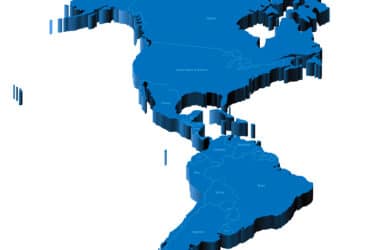Foreword
The 14th BIS Annual Conference took place in Lucerne, Switzerland, on 26 June 2015. The event brought together a distinguished group of central bank Governors, leading academics and former public officials to exchange views on the topic “Towards ‘a new normal’ in financial markets?”. The papers presented at the conference and the discussants’ comments are released as BIS Working Papers nos 561 to 564. BIS Papers no 84 contains the opening address by Jaime Caruana (General Manager, BIS), the keynote address by John Kay (London School of Economics) and remarks by Paul Tucker (Harvard Kennedy School). WP563 Who supplies liquidity, how and when? 1 Who supplies liquidity, how and when? Bruno Biais, Fany Declerck and Sophie Moinas1 Abstract.
Who provides liquidity in modern, electronic limit order book, markets?
While agency trading can be constrained by conflicts of interest and information asymmetry between customers and traders, prop traders are likely to be less constrained and thus better positioned to carry inventory risk. Moreover, while slow traders‘ limit orders may be exposed to severe adverse selection, fast trading technology can improve traders‘ ability to monitor the market and avoid being picked off. To shed light on these points, we rely on unique data from Euronext and the AMF, the French financial markets regulator, enabling us to observe the connectivity of traders to the market, and whether they are proprietary traders. We find that proprietary traders, be they fast or slow, provide liquidity with contrarian marketable orders, thus helping the market absorb shocks, even during a crisis, and they earn profits while doing so. Moreover, fast traders provide liquidity by leaving limit orders in the book. Yet, only prop traders can do so without making losses. This suggests that technology is not enough to overcome adverse selection; monitoring incentives are also needed.
Introduction
In perfect markets, buyers and sellers immediately find each other and reap gains from trade at frictionless prices. Real markets, however, can fall short of delivering such welfare improvements, due to frictions.
Market frictions, indeed, can prevent final sellers from rapidly locating final buyers. In this context, intermediaries can provide liquidity to impatient sellers, by purchasing their assets and holding inventories, until they find final buyers. Such market-making services have been analysed theoretically by Ho and Stoll (1981, 1983), Grossman and Miller (1988) and Weill (2007).2 What are the characteristics of intermediaries which enable them to supply liquidity? In fragmented markets, intermediation services can be provided by those agents with the best network linkages and the greatest search ability, which can be enhanced by high-frequency trading technology. Even if the market is centralised, delays can arise, reflecting that not all potential buyers and sellers are permanently monitoring the market, and that it takes time for investors to identify their trading needs, as analysed theoretically by Biais, Hombert and Weill (2014). In this context, as in that of fragmented markets, Gromb and Vayanos (2002) show that arbitrageurs, able to take positions in different markets, can provide valuable liquidity. Market-makers, however, bear costs when holding inventories, eg because they are risk–averse and reluctant to carry unbalanced inventory positions, as analysed theoretically by Ho and Stoll (1981), or because the principals of market-makers set position limits to discipline their agents. This suggests that the agents best placed to offer liquidity are those with the best inventory-holding ability, ie those with the greatest risk tolerance or the least acute agency problems. Because the aggregate inventory bearing capacity of marketmakers is limited, however, liquidity shocks have a transient impact on prices, ie there are “limits to arbitrage,” and liquidity supply is profitable (Shleifer and Vishny (1997), and Gromb and Vayanos (2002, 2010, 2015)).
Another market friction that restricts liquidity is adverse selection. As first shown by Akerlof (1970), adverse selection can magnify the price impact of trades and even lead to market breakdown. As shown by Glosten and Milgrom (1985) and Kyle (1985), adverse selection leads market-makers to post relatively high ask prices, and relatively low bid prices. Here again, however, the question arises: which agents will play the role of market-makers, and why? Efficiency suggests that the intermediaries should be the agents who are best able to mitigate adverse selection. Such ability could reflect better market-monitoring technology, enabling intermediaries to cancel their orders before they are picked off. This, however, could worsen the adverse selection problem for other investors, with less efficient monitoring technologies. Adverse selection for these investors could be further amplified if intermediaries took advantage of their timely market information to hit stale quotes themselves.
Since the beginning of the century, three developments have made these questions highly topical. First, equity markets have converged towards an electronic limit order book structure, in which a large number of different financial institutions (not just designated market-makers) can provide liquidity by leaving limit orders in the book. Second, low latency technologies have become available, increasing, at a cost, the ability to monitor changes in market conditions and react rapidly to them. 2 Symmetrical arguments hold for the case of impatient buyers. In that case, market-makers can provide liquidity by selling assets they hold in inventory, or by short-selling the asset. WP563 Who supplies liquidity, how and when?
Third, regulatory reforms before the crisis contributed to the fragmentation of markets and the development of high–frequency trading, while regulatory reforms after the crisis made proprietary trading more costly and complex for investment banks.3 How have these developments changed the economics of liquidity supply, and the gains from trades that can be reaped in financial markets? To shed light on these issues, we empirically analyse a new data set, with information about the orders and trades of different categories of members of Euronext, including proprietary traders and high-frequency traders.
Our data include a time-stamped record of all orders and trades (quantities and prices) on Euronext in French stocks during 2010. Our sample period brackets the Greek crisis of the summer of 2010, enabling us to analyse how liquidity supply compares between “normal” and crisis times. Our data also include anonymised member codes, and for each member, we know (i) the quality and speed of its connection to the market, and (ii) if its trades were 100% proprietary, 100% agency, or a mix of both. Using (i) we identify fast traders based on direct information about their technological investment, which contrasts with indirect identification, based on trading style. Because of its huge size, and also because of some technical characteristics of the Euronext market,4 this data set is difficult to handle. At this stage, we have analysed 23 French stocks, including 10 large caps, nine mid-caps, and four small caps. The size of the corresponding data exceeds 7 tera–octets.
Our first main empirical finding relates to liquidity supply. We find that proprietary traders, whether fast or slow, tend to place marketable buy orders after price declines, and marketable sell orders after price increases. Thus, we find that proprietary traders follow contrarian strategies, buying against downward price pressure, and selling against upward price pressure. This contrasts with the other traders, who tend to buy after price rises and sell after price declines, which can be interpreted as momentum trading. While the proprietary traders’ contrarian strategies rely on marketable orders, they supply liquidity to the market. This is consistent with proprietary traders being better able to carry inventory risk than other traders. This might be because they commit their own capital, rather than trading on other people’s behalf. This could also reflect better incentive contracts. In both cases, superior ability to carry inventory risk would stem from having more “skin in the game.”
Market liquidity could be hampered if liquidity supply evaporated in times of market stress (see eg Nagel 2012). Interestingly, the contrarian strategies of proprietary traders are particularly prevalent for small stocks, and during the Greek crisis. Thus, they are not “fair weather” liquidity suppliers, disappearing when the market most needs them. Moreover, the contrarian strategies of proprietary traders are on average profitable. This suggests they are able to identify when transient price pressure, possibly reflecting liquidity shocks, has driven prices away from equilibrium. In those circumstances, proprietary traders’ marketable orders conduct risky 3 Correspondingly, some investment banks had to move their prop trading activities to segregated subsidiaries, such as Descartes Trading for Société Générale. 4 The majority of markets refresh the limit order book at the end of the trading day, eliminating unexecuted limit orders. This is not the case in Euronext, where a limit order can be left in the book for up to one year. Consequently there are many remaining limit orders, far from the quotes. This increases the size of the data set. 4 WP563 Who supplies liquidity, how and when? arbitrage. Thus, by absorbing selling or buying pressure, they tend to stabilise the market. Our second major empirical finding relates to adverse selection. We find that the information content of marketable orders, although significantly positive, does not significantly differ across members’ categories. In particular, fast traders’ marketable orders do not seem to be more informed than those of slower traders. In contrast, we find that the adverse selection cost borne by non–immediately executed limit orders is significantly lower for fast proprietary traders. On the other hand, adverse selection costs are high for fast non–proprietary traders’ limit orders. This suggests that technology, in itself, is not enough to mitigate adverse selection. It is also necessary that the traders have the incentives to use the technology efficiently.
Moreover, while fast proprietary traders frequently trade with non–immediately executed limit orders, slow proprietary traders only infrequently do so. Thus, while slow proprietary traders mainly supply liquidity by placing contrarian marketable orders, fast proprietary traders also supply liquidity by placing non-immediately executed limit orders. We find, however, that this second type of liquidity supply becomes much less prevalent after the crisis.
Literature
Our paper relates to the rich literature empirically analysing algorithmic and high frequency trading: Hendershott, Jones and Menkveld (2011) show that liquidity provision in equity market is provided by algorithmic traders who are not officially designated as marketmakers. Brogaard, Hendershott and Riordan (2014) analyse NASDAQ data, relying on a classification of traders performed by the market organisers. They find that HFTs’ marketable orders have information content, but not significantly more than other traders’ marketable orders. They also find that HFTs’ orders tend to be contrarian and are on average profitable. Thus, our empirical findings complement those of Brogaard, Hendershott and Riordan (2014) in two ways: Our findings relative to high-frequency traders are similar to theirs, and thus speak to the robustness of their results to a different market and a different way of identifying high-frequency traders. Our findings on proprietary traders are new, and thus provide an incremental contribution to the literature. We show that several characteristics of highfrequency traders’ orders (ie contrarian, profitable and marketable) are also characteristics of the slow proprietary traders’ orders in our data. This suggests that these traders are able to place contrarian and profitable orders not because they have low latency, but because they are proprietary traders.5 Brogaard, Hagstromer, Norden and Riordan (2014) find that the choice to colocate is followed by reduced adverse selection costs. Our results on adverse selection are in line with their findings. Our incremental contribution, here, is to emphasise that 5 The high-frequency traders identified by NASDAQ are very likely to also be proprietary traders. WP563 Who supplies liquidity, how and when? 5 technology may not be sufficient to reduce adverse selection. Appropriate incentives to use the technology efficiently seem to be also needed. Hendershott and Menkveld (2014) offer a state space model to identify how price pressure relates to the specialist’s inventory. In a sense, the proprietary traders in our data play a similar role to the specialist in Hendershott and Menkveld (2014).6 Our paper is also in line with analyses of liquidity supply by market participants that are not officially designated as market-makers. Franzoni and Plazzi (2014) document liquidity supply by hedge funds, classifying as liquidity supply purchases (or sales) at a price below (or above) a benchmark (eg the opening price or the VWAP). Nagel (2012) argues that the returns on short-term reversals can be interpreted as the returns from liquidity provision. Since, in our data, we observe the type of the market participants and the details of their orders, we can rely on more precise data to directly identify liquidity supply. Our empirical finding that proprietary traders supply liquidity with profitable contrarian trades confirms the relevance of the approach of Nagel (2012) and Franzoni and Plazzi (2014).
Moreover, Nagel (2012) interprets the high return on liquidity supply strategies when the VIX is high as evidence that liquidity supply is reduced at those times. Our direct evidence on liquidity supply offer some nuance on this point: on the one hand, we find that proprietary traders continued to place profitable marketable contrarian orders during the Greek crisis of the summer of 2010, so, in that sense, liquidity did not “evaporate”. On the other hand, we find that the crisis triggered a drop in the placement of nonimmediately executed limit orders in small caps by fast proprietary traders. Other things equal, this corresponds to a decline in liquidity supply. The next section presents our data and summary statistics. Section 3 analyses the placement and informational content of marketable orders. Section 4 analyses the adverse selection costs incurred by non-immediately executed limit orders. Section 5 summarises our results and discusses policy implications.
Market structure, data and summary statistics
Euronext is an electronic limit order market, operating continuously for most of the stocks. Orders are submitted by the financial institutions that are members of Euronext. Members are assigned an identification code. Most institutions have a single ID code, but some choose to have up to four different codes to differentiate their activities (eg brokerage versus proprietary trading). Each ID code can have several links to the exchange. The total fee charged by Euronext to a member depends on the number of links connected to the Euronext servers, and on the capacity of each link. This capacity is named “throughput” and indicates the maximum number of messages (order submission, cancellation or modification of an existing order) that the traders are allowed to send to the Exchange in one calendar second via this link. The throughput of each link can be 10, 25, 50, 100, 200, 250, or 500. It seems that a large throughput does not only increase the number of messages that can be sent, but also increases the speed with which they reach the market. We are able to document this empirically because, in our data, we observe (at the microsecond level) 6 Furthermore, Kirilenko, Kyle, Samadi and Tuzun (2014) find that HFTs did not cause the Flash Crash but exacerbated it. Menkveld (2013) document liquidity supply by large HFTs across ChiX & Euronext. 6 WP563 Who supplies liquidity, how and when? the time at which an order was sent to the market and the time at which the order was executed. We also observe the throughput of the link via which the order was sent. Marketable orders, by construction, are immediately executed. Thus, for these orders, the difference between the execution time and the submission time is an inverse measure of the speed of the connection.
For more please see https://www.bis.org/publ/work563.pdf






